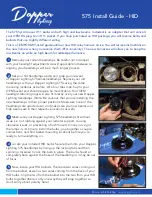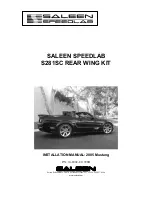
Description of engine OM 607
Drive
49
b
Introduction of the New A-Class, Model Series 176
Turbocharging
The charging improves the degree of cylinder
charge. This in turn increases the engine torque and
output.
In a supercharged engine the low pressure
compression and expansion are undertaken by an
upstream turbocharger. As a result the piston
driving mechanism can be smaller with the same
performance data, and this is coupled with fewer
mechanical losses. The turbocharger sucks in fresh
air through the air filter at the compressor inlet and
routes it by way of the compressor outlet into the
charge air pipe upstream of the charge air cooler.
The high speed of the compressor impeller and the
resulting high volumetric flow rate compresses the
air in the charge air pipe.
The compressed and thereby heated air flows over
the charge air pipe to the charge air cooler. This
cools down the charge air and routes it over the
charge air pipe to the cylinder head.
The boost pressure is regulated by the CDI control
unit to match the following values and the relevant
components:
• Charge air pressure and temperature sensor
• Coolant temperature sensor
• Temperature sensor upstream of turbocharger
• Crankshaft position sensor for engine rpm
• Injection quantity, dependent on injection
period and fuel pressure
• Exhaust back pressure sensor
• Atmospheric pressure sensor
P14.20-2327-00
Charging layout
M16/6 Throttle valve actuator
B157/2 EGR temperature sensor, low pressure
Y27/7
Low-pressure exhaust gas recirculation
actuator
Y27/8
High-pressure exhaust gas recirculation
actuator
1 Charge air cooler
A Charge air (uncooled)
B Charge air (cooled)
– This printout will not be recorded by the update service. Status: 06 / 2012 –
















































